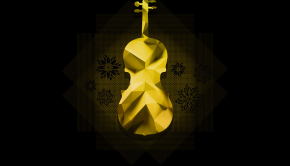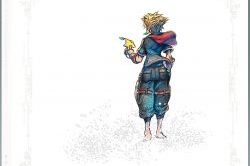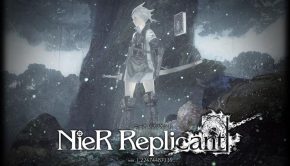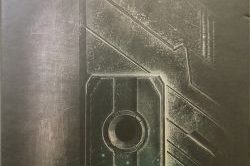memória! -The Very Best of Yoko Shimomura-
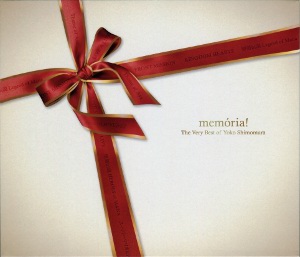 |
Album Title: memória! -The Very Best of Yoko Shimomura- |
| Record Label: Square Enix |
|
| Catalog No.: SQEX-10431 |
|
| Release Date: March 26, 2014 |
|
| Purchase: Buy at CDJapan |
Overview
Yoko Shimomura has had a stunning career as one of the most celebrated composers from Japan. For 25 years, she has composed a stunning array of soundtracks, which includes Square Enix’s Super Mario RPG, Live-A-Live, Front Mission, Parasite Eve, Legend of Mana, Heroes of Mana, and of course her most popular work to date, Kingdom Hearts. Aside from writing for all of the aforementioned series, she has wrote some wonderful scores for Capcom and has contributed to numerous projects as both arranger and composer. Her works are often melodic, spanning light-hearted and whimsical to dark and romantic. One can tell just by listening to her compositions that she knows her way around a piano, as she prominently features piano in her works and gives them an almost concerto quality.
After years of fans craving an orchestral arrange album of her music, she delivered in the form of Drammatica, which was a commercial success and marked the video game debut of the WDR Radio Orchestra. Five years later, to celebrate her 25th anniversary, another orchestra album was made to commemorate her successes in the form of memoria! -The Very Best of Yoko Shimomura-. With an impressive set list of compositions, I had high hopes for this release. Let’s see if it delivered.
Body
The album starts off with a rendition of “Dearly Beloved” arranged by Hiroyuki Nakayama for two pianos. Instantly bringing some intimacy to this release, Shimomura herself in fact performed this piece together with Nakayama. It starts off very similar to Kaoru Wada’s orchestration, before developing in a waltz-like style similar to that employed in Kingdom Hearts Dream: Drop Distance. The arrangement is more for nostalgic than providing anything new and refreshing. I would have liked to see a different selection altogether, but I understand why they chose this one due to fan popularity and that it is one of her iconic themes.
There are several other piano works here. I have not heard this next piece, “Elegy”, before as I am not familiar with Yoko Shimomura’s Front Mission soundtrack. However, this piano solo arrangement has a contemplative Chopin-esque quality and reminds me a little of Riku’s Theme from the Kingdom Hearts Piano Collection. It starts off dark and sinister, then gradually builds up steam to some fancy arpeggio work. This arrangement is lush and complex and even surprised me toward the middle where the style turns to a more subdued and gorgeous sound. This is short lived, however, as the style returns to the more mysterious and sinister sounds from before. This arrangement is a strong offering and one that fans of Shimomura’s piano works will most certainly enjoy. Once again we return to the chamber works, in the form of another piano solo arrangement. We are treated to A.Y.A. from Parasite Eve although I would rather have had the Ending Theme which would have been nice to hear with full orchestra and piano. The piano arrangement is very ponderous and dark. In typical Hiroyuki Nakayama fashion, the music itself is stunning and balances the lower punches in the left hand and arpeggiated flourishes.
“The Revolving Wheel of Fate” is from Heroes of Mana is probably one of my favorite arrangements on this entire album. Kameoka’s interpretation just bleeds emotion and is such a departure from the original stylistically. While the original is more bombastic and upbeat, this version is sorrowful, dark, and more emotionally stirring. The best part is that it is a duet featuring two of my favorite instruments, piano and cello, used in an extremely emotional way. It reminded me of John Williams’ work on Memoirs of a Geisha. The exchanges between the cellist and the pianist are so well written (perfect build ups in notes and dynamics) and the emotion conveyed between the two performers is more powerful than what a full orchestra would be able to accomplish. This is the arrangement on the entire album for me. The chemistry is perfect!
Moving to the orchestral tracks, based on Xion’s Theme from Kingdom Hearts 358/2 Days, “Vector to the Heavens” is one of the most popular of Ms. Shimomura’s compositions to date. I would go as far as to say that this theme represents her Kingdom Hearts work as a whole in less than six minutes. To start things off the orchestra edges in with higher pitched whole notes like a sheet of fog in the night over a quiet lake. The piano plays some tasteful chords while the flute comes in over the top ever so delicately as with the clarinets, lower strings, and horns. The oboe driven melody is appropriate and the string harmonies are refreshing and well utilized. The strings swell and help the oboe in building up to the melody brought out in full with the strings and the piano adding a nice concerto like texture. The flutters in the woodwinds are nice touches also. Throughout this entire piece I can’t help but be reminded of Kaoru Wada, but it was to my surprise that I discovered it was none other than Sachiko Miyano, who previously worked on Voices – Music from Final Fantasy and the Mana series’ box set medley. “Vector to the Heavens” is a well done orchestration that is beautiful, sorrowful, and dark all in the same breath. It is most certainly a highlight and the best choice to represent Kingdom Hearts.
Speaking of Miyano’s orchestration for Seiken Densetsu, this next one is six minute medley of some of Shimomura’s themes from Legend of Mana called “Going Through the Flame –Legend of Mana Dragon Killer Medley”. This arrangement is mostly comprised of battle themes and gives one the sense of war with the poignancy of its sound. The orchestration is top notch and is actually shows incredible skill on Miyano’s part. The flutters in the woodwinds, the loud and imposing brass, and the intricate string passages all make this arrangement one powerhouse of musical journey. Kameoka’s “Song of Mana” is a pleasant return to the orchestra and reprises the vocals of Annika. The ominous introduction introduces the game’s main theme, but this time the melody is given to Annika, with the piano as accompaniment until the orchestra enters. I got chills down my spine as the vocalist just soars along with the flowing strings. I wish Shimomura would do more pieces like this as the vocal with orchestral accompaniment is just so powerful here, with the string ostinati being especially effective. The flourishes come out in all the right places and each section has their moment to shine. The bridge of the song just soars before returning to the chorus once more. Building on the majestic sound of the original, this an unexpected gem for sure.
Next on the list is “Beware the Forest’s Mushrooms” from Super Mario RPG Legend of the Seven Stars which is arranged by Drammatica veteran Natsumi Kameoka. This one although is a little slower in temp than I would like is still very enjoyable and takes me back to the grand old days of SquareSoft. I love how this orchestration starts in the woodwinds, with the oboe driving the melody and the flute offering a nice countermelody. It is a nice mysterious sound that is only more enhanced when the bells come in and the melody repeats with the orchestra in full. I really love this lush rendition and the violin solo is so appropriate and an unexpected surprise. A fun arrangement and one that keeps getting played to death on my phone! “Goodbye Geno – Seeking Dreams Through the Window of the Sky” from the same soundtrack is a heartfelt composition and Sachiko Miyano’s orchestration is such a step up from the original in so many ways. The introduction reminds me of stars falling with its light sound in the strings and piano. Then a cute little passage plays in which the piano sounds playful with pizzicato strings and violin melody. This simply serves to lead us to the main melody which is just beautiful and manages to make me tear up a little because I played the entire game so I know the story behind this one. The orchestration is nothing complex, but it doesn’t need to be as this piece is best suited to being simple and heartfelt. Miyano’s last offering leaves a wonderful feeling in our hearts!
On this album, there are three selections that do not feature orchestral instruments, in favour of band performances arranged by HIDEAWAYS. Both “Kiss of Jealousy” and “MEGALOMANIA” from Live-A-Live are reinterpreted as J-Pop arrangements, completed with upbeat vocals from Aina Kase. Whereas the former has a kawaii sound reminiscent of her original album murmur, “MEGALOMANIA” is pure 80s rock cheese. Given Live-A-Live was such a diverse score, I’m a little disappointed that they focused on the more pop-flavoured aspects of the score, rather than incorporating some period orchestrations and traditional instrumental performances. While many fans will be pleased to hear “Pain the Universe” from Legend of Mana finally given a rock band interpretation, I could not easily enjoy it as I found it an interruption to the orchestrations. While all these aren’t bad interpretations and pay some testament to the diversity of Shimomura’s work, I just felt they didn’t belong on this album at all. It feels like they were simply tacked on to take up disc space.
The only bonus track that I felt appropriate was “Omnis Lacrima” which will be featured in Final Fantasy XV. It is orchestrated by none other than Kaoru Wada and is an orchestral powerhouse right out of the gate. This is the music heard in the last gameplay trailer released for Final Fantasy XV. This theme is very dark and relentless. The choir is a nice addition and I love the aggressive sound they add to this piece. If this is how the next Final Fantasy score will sound then I am very excited indeed. I am hoping that this will become her magnum opus, just as Final Fantasy XIII served as Masashi Hamauzu’s. The other bonus tracks are throwaway karaoke renditions of “Kiss of Jealousy” and “Megalomachia”, as well as her contribution to the still-unreleased score to Demons’ Score, “The Masked”; a little reminiscent of Vega’s theme from her soundtrack to Street Fighter II, the catchy flamenco guitar work really shines here, though the flavour of this track is a little off for the album overall.
Summary
With some of the best orchestrations and chamber style pieces of Yoko Shimomura’s work to date, memoria! features some astonishing highlights. However, it falls short of becoming a perfect album due to the inclusion of some poor tracklisting decisions that interrupt the flow of orchestral music. The album also fails to include more iconic pieces from Shimomura’s repertoire, including her Capcom scores such as Street Fighter II and Last Ranker as a result of licensing issues. It would have been nice to see the ending theme of the still-underlooked Parasite Eve too, but beggars can’t be choosers. Aside from those issues, the orchestrations that are present are the best I have heard and the chamber pieces are of the same high quality. I believe that Ms. Shimomura deserves a two disc set with more orchestrations. Does this represent the very best of Yoko Shimomura more so than Drammatica? No, but did it manage to bring high quality arrangements despite the awkward band performances? Absolutely!
Do you agree with the review and score? Let us know in the comments below!
4
Posted on May 21, 2014 by Josh Barron. Last modified on May 22, 2014.

